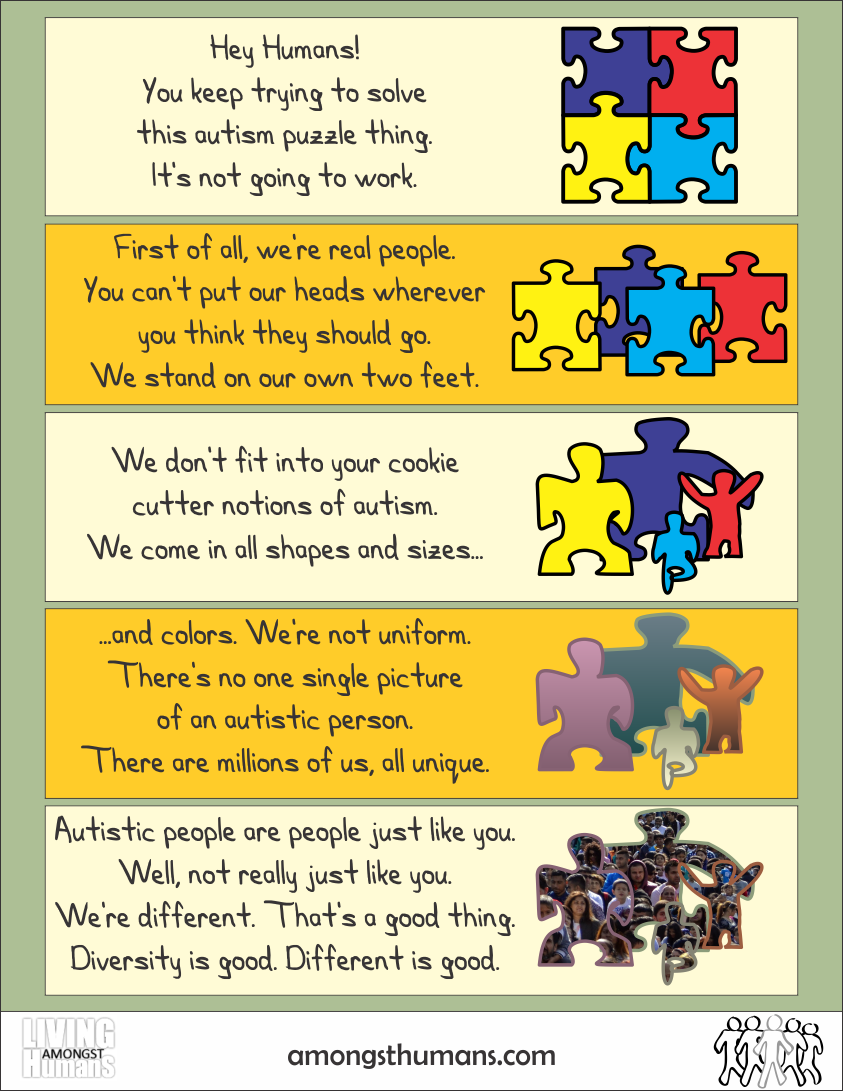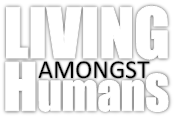
There are almost as many viewpoints on autism as there are people concerned with autistic lives. Less explicitly represented historically, but increasingly more so of late, are those living those lives from the inside: autistic people.
The ubiquitous symbol of autism, proudly and compassionately displayed by parents, caretakers and professionals, is the multi-colored jigsaw puzzle. It is an apt symbol from that point of view. Some of these people, though, as well as a much larger percentage of autistic individuals, believe the symbol objectifies a class of people. It associates them with an illness, in the same sense that a pink ribbon does so regarding breast cancer. Autism is, in some sense, and to varying degrees, a disability. Autism is much more than that, though. It is a difference—with challenges, delights and surprises as much as any other human variation, especially those involving the most complex object we know about in the universe: the human mind.
This graphic makes clear to the world of humans that there is much more to autism than can be captured by a puzzling symbol. Autistic people are as clear about themselves as any other segment of the population. I invite you to see this graphic not as a bold statement—the message is basic, after all—but rather as an invitation to begin a conversation, an opportunity to learn. For all.
[The infographic links to a PDF version that you may distribute without restriction.]

Well said. One of the biggest challenges with autism is the expectation that a therapy that has shown positive results in one child will have they same or better results with a child who has similar behaviors.
“One size fits all” works about as well for autism as it does in general: not very well. For me, it’s hats that trip me up most often. Well, hats and most social conventions. Neither is constructed with my contours in mind.
Working as an ABA therapist I know first hand each child is different and any treatment must reflect the need of that individual. There is no cookie cutter method to treatment and I don’t think there ever will be.
Trouble is, there are some indevidules on the deep end of the spectrum how are unable to cope. who can be said as having a disability.
I register as mildly autistic. (with ADHD and stuff) my son as Asperger’s. (I had delayed talking and he didn’t)
Here in the Uk although it is known they are on the same spectrum. his ‘label’ is well thought of. where as mine… less so.
one of the lessons which many autistics need to learn (least I do and my boy) is how to spot and avoid predatory people, those for whom out social awkwardness and sometimes loneliness sticks out like a symble saying ‘use me’ in big neon letters.